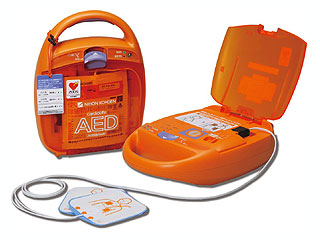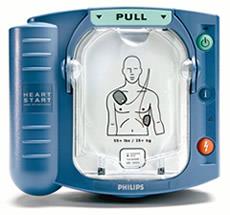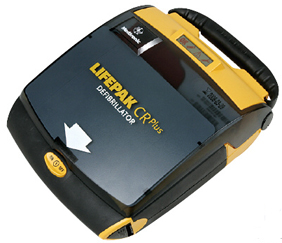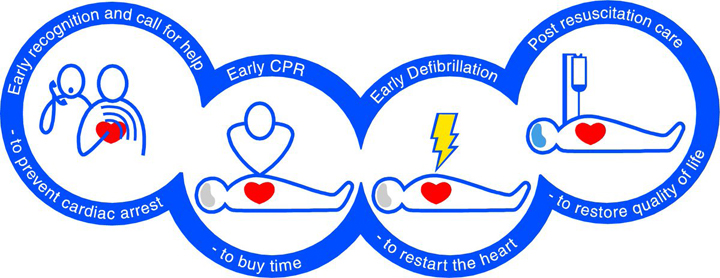First aid with AEDs
Sudden cardiac arrest can occur to anyone, anywhere, anytime. Early defibrillation is key to saving the lives of cardiac arrest patients. Automated external defibrillators (AEDs) are designed to help lay rescuers perform this potentially life-saving procedure.



What to do if someone suddenly collapses in front of you
- Talk to the victim, asking "Are you OK?" If there is no response, call for help, asking people nearby to "call for an ambulance and get an AED."
- Unresponsiveness, or a lack of or abnormal breathing, may be a sign of cardiac arrest. You must immediately start cardiopulmonary resuscitation (CPR).
Note: It is often difficult to distinguish between normal and abnormal breathing. If uncertain, go ahead and start CPR. - If you have an AED on hand, turn it on. The device will tell you what to do next.
Place one electrode pad below the victim's right collar bone, and the other over the lower left rib cage.
The AED will tell you to administer electric shocks.
Move away from the victim and loudly state, "I'm clear, you're clear, we're all clear," before delivering the shocks. It is very important that no one is in physical contact with the victim during shock delivery.
Chain of survival
The chain of survival refers to a series of steps to be followed in order to give cardiac arrest patients the best chance to survive. Those steps are: 1) early recognition and call for help, 2) early CPR, 3) early defibrillation, and 4) post-resuscitation care.


